Over the past couple of months we’ve seen some BIG, BIG announcements from MyHeritage, one of the big players in the genealogy field. Now for those of you who may not be all that familiar with MyHeritage, they are similar-ish to Ancestry in the they allow you to search billions of records online, as well as being able to put your tree online. One big difference is that they are far more internationally focused, whereas the bulk of Ancestry stuff is rather US orientated.
Anyway back to all the big things happening in the world of MyHeritage.
—————————————————————————————–
FAMILY TREE BUILDER 7.0
If you don’t want to put your tree online, no worries, you don’t have to. There are genealogy programs that you can install on your computer and type it up there. Family Tree Builder 7.0 is the shiny new version of their genealogy software program that you can download and use to enter your family tree.
One of the major highlights of version 7.0 is that if you do have your family tree online on MyHeritage, you can now synchronize between the software on your computer and your online tree. Bringing the power of the cloud to genealogy software means that you can access and edit your family tree from any device, and make changes on the go.
Version 7.0 is also the first to enjoy the company’s successful Record Matching, technology, recently described by genealogy bloggers James Tanner and Randy Seaver as “magic”, which automatically researches every individual in the user’s family tree and looks for matching historical records with high accuracy.
If your interested in finding out more about Family Tree Builder 7.0, you can read their extensive blog post on it. And if you’d like to give it a whirl, you can download Family Tree Builder using this link: http://www.myheritage.com/
—————————————————————————————–
ALL U.S. CENSUS RECORDS NOW AVAILABLE ON MYHERITAGE
MyHeritage recently made the announcement that the entire collection of U.S. Federal Censuses is now available on their website. These censuses span every decade from 1790-1930 and complement the existing 1940 U.S. Census, which you can search all of these for free on MyHeritage.
The collection is the nation’s largest and most important set of records including a huge searchable index and all scanned images of the original census documents, covering some 520 million names.
Start searching the censuses now
—————————————————————————————–
RECORD DETECTIVE
Now as if the first two announcements weren’t enough, MyHeritage have added yet another ‘string to their bow’ by introducing Record Detective. This is the first technology of its kind to automatically extend the paper trail from a single historical record to other related records and family tree connections.
So Record Detective generates new leads and discoveries by turning a single record into a door to more. For example, a record discovered in MyHeritage’s digital archive, SuperSearch, will now automatically include a summary of additional records and individuals in family trees relating to it, providing new information and clues to take your research to new directions.
Record Detective can be accessed in two main ways, through Record Matches and from MyHeritage’s online digital archive, SuperSearch.
Examples of how Record Detective benefits users:
– When a user finds a gravestone photo, Record Detective is capable of automatically finding and displaying who was buried there, and providing a link to the person’s family tree, plus birth, census and marriage records and even newspaper articles about that person.
– For users viewing a page in a digitised yearbook on MyHeritage, Record Detective will show the people mentioned on the page in their respective family trees and allow users to learn more about their families and get in touch with their relatives (subject to privacy protections).
– When viewing a record in the US census collection, Record Detective will provide census entries of the same person in former or subsequent years, and do this for the entire household. The additional information could include newspaper articles about the person’s son or the immigration papers of his parents.
Here’s a short video which explains how it works.
If you aren’t already a member of MyHeritage, go and check it out, it’s free to sign up. If you’re wanting to sign up to view their data you can find their subscription rates here.


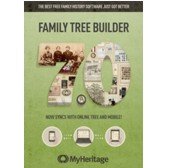
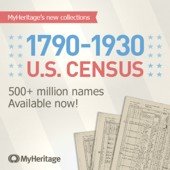
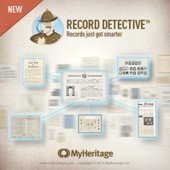


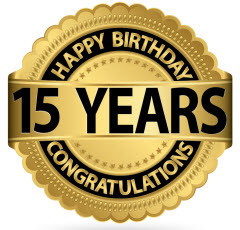

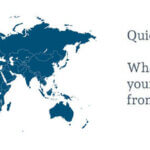

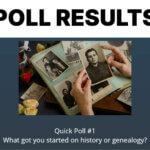


I joined My Heritage a year or two ago. I found it was overiding some of my sites I.E opening page I preferred was supplanted by My Heritage. No matter what I did I could not get rid of it and go back to my opening page. They were pushy and had enough so then the battle started. I could not seem to cancel the My Heritage that was stuck on my computer. I complained and still it was installed on my computer and interfering with other installed items. I did a bit of detective work and found it was based in europe or middle east. I then saw the reason for so targeted to certain areas. Then they got into bed with Ancestry (who has a hobby of collecting genealogy sites.) That did it. After a concentrated effort I finally was clear of them and what a relief that was. In the early days of Ancestry I had some real problems with them. Took months to finally get them to see that I did not want to pay for a repeat subscription. Had to keep the visa card with little in it so they could not take the money for a repeat year.
So many letters to them I had advised them one month prior I was not going to resubscribe. Still they kept presenting their bill to my visa card. Then I was receiving threatening notices from them etc for legal charges. After finally sorting it out I was glad it was all over. I believe that this sort of action no longer takes place in Ancestry now and that they are much more user friendly.
I would be very wary of having my tree on My Heritage, due to the way they superimposed their components over my choices.
But then….maybe they have improved since I was involved with them. I hope so. Will give them the benefit of the doubt.